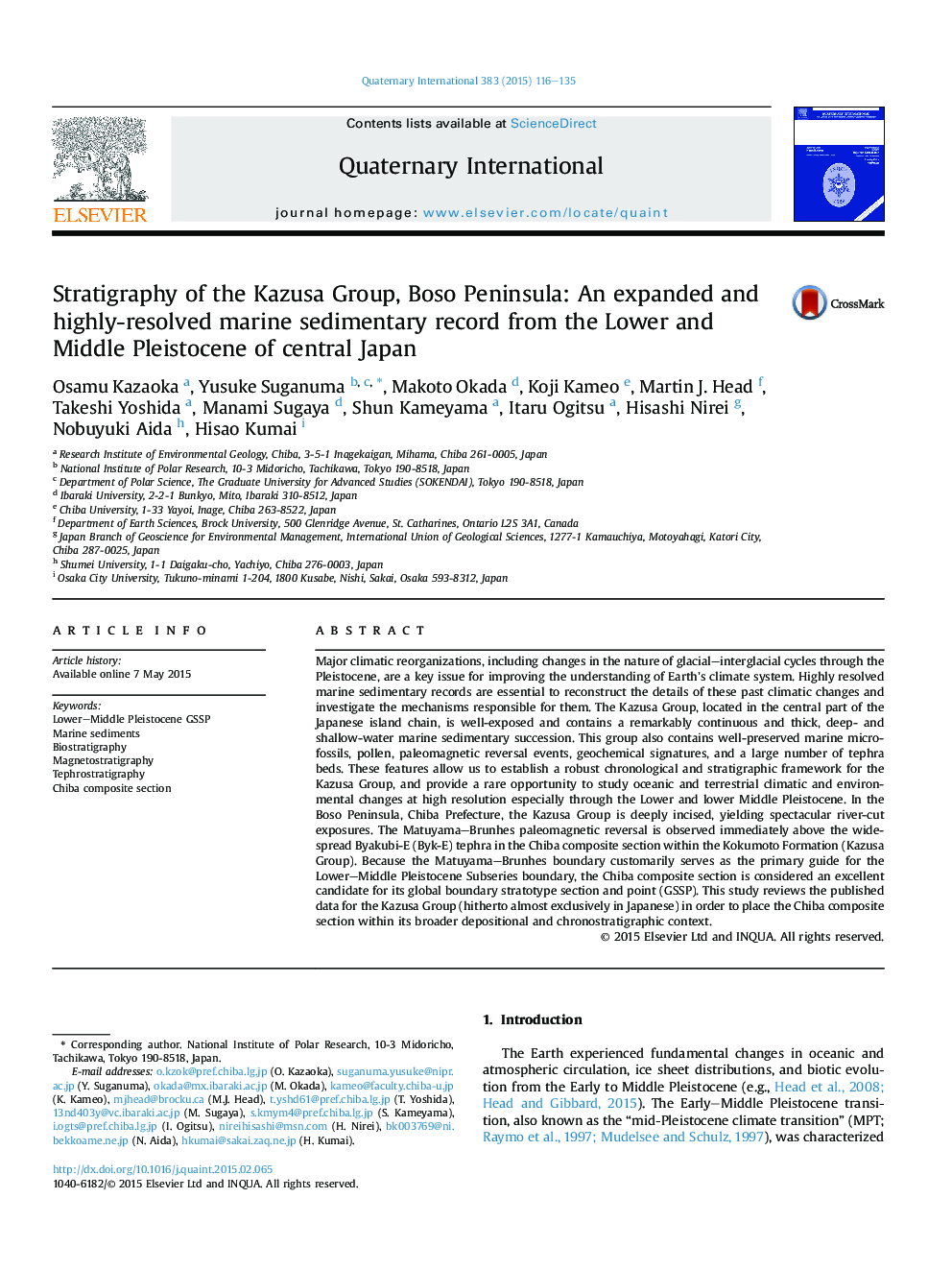| کد مقاله | کد نشریه | سال انتشار | مقاله انگلیسی | نسخه تمام متن |
|---|---|---|---|---|
| 1040528 | 1484115 | 2015 | 20 صفحه PDF | دانلود رایگان |
Major climatic reorganizations, including changes in the nature of glacial–interglacial cycles through the Pleistocene, are a key issue for improving the understanding of Earth's climate system. Highly resolved marine sedimentary records are essential to reconstruct the details of these past climatic changes and investigate the mechanisms responsible for them. The Kazusa Group, located in the central part of the Japanese island chain, is well-exposed and contains a remarkably continuous and thick, deep- and shallow-water marine sedimentary succession. This group also contains well-preserved marine microfossils, pollen, paleomagnetic reversal events, geochemical signatures, and a large number of tephra beds. These features allow us to establish a robust chronological and stratigraphic framework for the Kazusa Group, and provide a rare opportunity to study oceanic and terrestrial climatic and environmental changes at high resolution especially through the Lower and lower Middle Pleistocene. In the Boso Peninsula, Chiba Prefecture, the Kazusa Group is deeply incised, yielding spectacular river-cut exposures. The Matuyama–Brunhes paleomagnetic reversal is observed immediately above the widespread Byakubi-E (Byk-E) tephra in the Chiba composite section within the Kokumoto Formation (Kazusa Group). Because the Matuyama–Brunhes boundary customarily serves as the primary guide for the Lower–Middle Pleistocene Subseries boundary, the Chiba composite section is considered an excellent candidate for its global boundary stratotype section and point (GSSP). This study reviews the published data for the Kazusa Group (hitherto almost exclusively in Japanese) in order to place the Chiba composite section within its broader depositional and chronostratigraphic context.
Journal: Quaternary International - Volume 383, 5 October 2015, Pages 116–135
